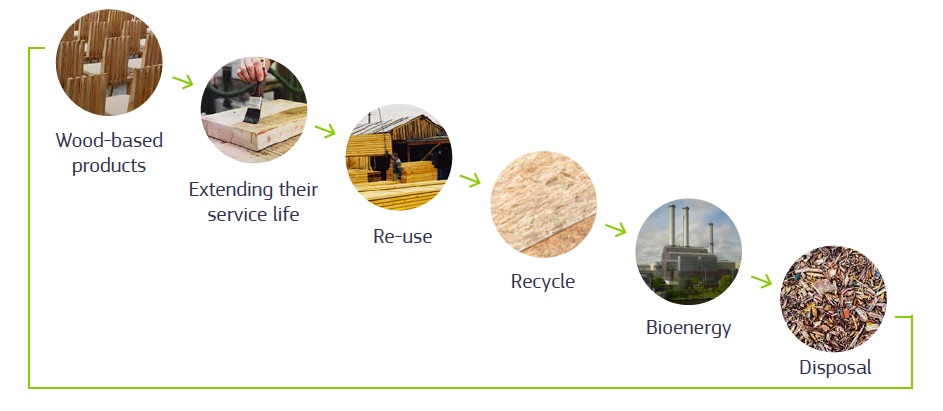Expert analysis of the changes that are likely to be made in the nearest future by the RED II Directive. We tell in more detail about the cascading principle of biomass use.
It will be recalled that the European Commission has published proposals to amend the RED II Directive. The overall objectives of the revision of REDII are to achieve an increase in the use of energy from renewable sources by 2030, to foster better energy system integration, and to contribute to climate and environmental objectives including the protection of biodiversity, thereby addressing the intergenerational concerns associated with global warming and biodiversity loss. Read about the innovations that include strengthening the targets for RES, as well as the requirements for sustainable use of forest biomass in the EU in the previous article.
The essence of the principle
The cascading principle of biomass use assumes that energy from biomass is produced in a way that minimizes excessive destructive effects on the biomass market and harmful effects on biodiversity.

In line with the cascading principle, woody biomass should be used according to its highest economic and environmental added value in the following order of priorities:
- Wood-based products.
- Extending their service life.
- Re-use.
- Recycling.
- Bioenergy.
- Disposal.
No later than one year after [the entry into force of this amending Directive], the Commission shall adopt a delegated act in accordance with Article 35 on how to apply the cascading principle for biomass, in particular on how to minimize the use of quality roundwood for energy production, with a focus on support schemes and with due regard to national specificities.
The Member States shall take measures to ensure that energy from biomass is produced in a way that minimizes undue distortive effects on the biomass raw material market and harmful impacts on biodiversity. That’s why as part of the measures referred to in the document Member States shall grant no support for:
- the use of sawlogs, veneer logs, stumps, and roots to produce energy.
- the production of renewable energy produced from the incineration of waste if the separate collection obligations laid down in Directive 2008/98/EC have not been complied with.
From 31 December 2026, and without prejudice to the obligations in the first subparagraph, Member States shall grant no support to the production of electricity from forest biomass in electricity-only-installations, unless such electricity meets at least one of the following conditions:
- it is produced in a region identified in a territorial just transition plan approved by the European Commission, in accordance with Regulation (EU) 2021/… of the European Parliament and the Council establishing the Just TransitionFund due to its reliance on solid fossil fuels, and meets the relevant requirements set in Article 29(11);
- it is produced applying Biomass CO2 Capture and Storage and meets the requirements set in Article 29(11), second subparagraph.
By 2026 the Commission shall present a report on the impact of the Member States’ support schemes for biomass, including on biodiversity and possible market distortions, and will assess the possibility for further limitations regarding support schemes to forest biomass.